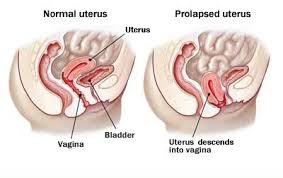

Pune : 7411951943
Mumbai : 8123922650
Nashik : 7411804875
Kolhapur : 8147647685
Latur : 7411951965
Belagavi : 7411805024
Bengaluru : 7411951962
Hyderabad : 8123919853
Secunderabad : 8123919853
Mysore : 8971928968
Surat : 8147647677
Ludhiana : 7411951963
Gurugram : 8792498991
Kalaburagi : 9164045999
Lucknow : 8855865060
Dubai : +91 8888188885
Pelvic Organ Prolapse is a condition in which the muscles and tissues that support the pelvic organs become stretched, damaged, or weakened, causing the organs they support to drop downward or sag. The pelvic organs include the Vagina, Uterus, Bladder and Rectum


Helpline: +91 7411951943, 08888288884
Get Directions For AppointmentHelpline: +91 7411951943, 08888288884
Get Directions For AppointmentHelpline: +91 7411951943, 08888522226
Helpline: +91 7411951943, 08888200004
Get Directions For AppointmentHelpline: +91 7411951943, 09175232340
Helpline: +91 8123922650, 08888166667
Helpline: +91 8123922650, 09156634201
Helpline: +91 7411951962, 08888133338
Helpline: +91 7411951962, 08197978641
Helpline: +91 7411951962, 09731118056
Helpline: +91 7411951962, 08792950455
Helpline: +91 7411951962, 07996126669
Helpline: +91 7411951962, 09036053501
Helpline: +91 8123919853, 07680862049
Helpline: +91 8123919853, 09550600857
Helpline: +91 8792498991, 09990479800
Helpline: +91 8792498991, 09990473800
Copyright © Healing Hands Clinic Pvt. Ltd 2025, All rights reserved.
